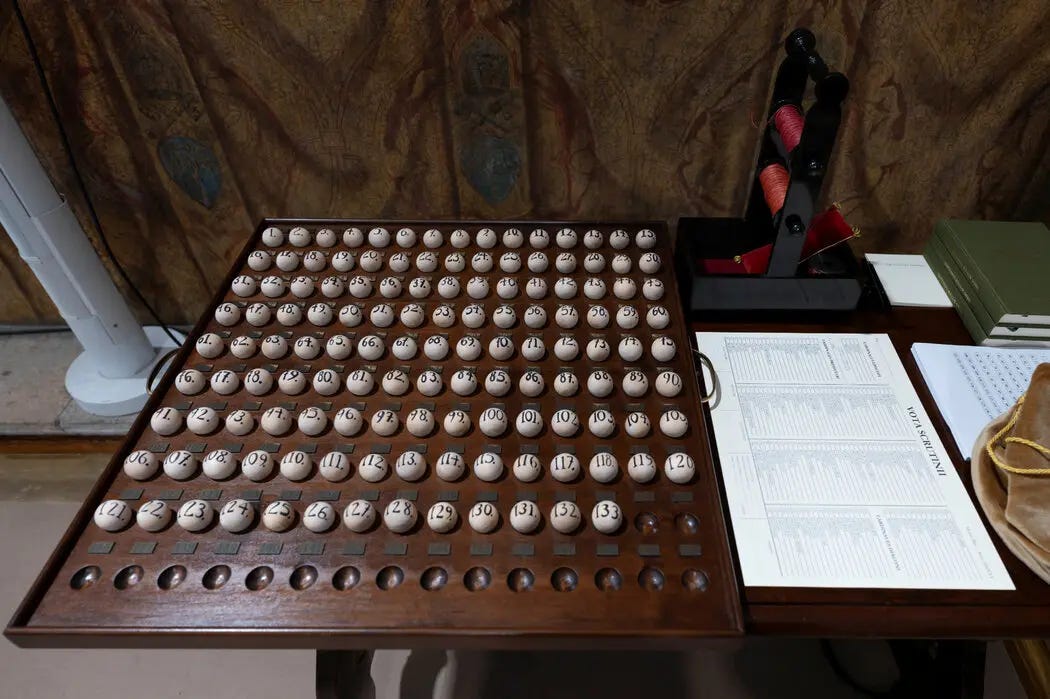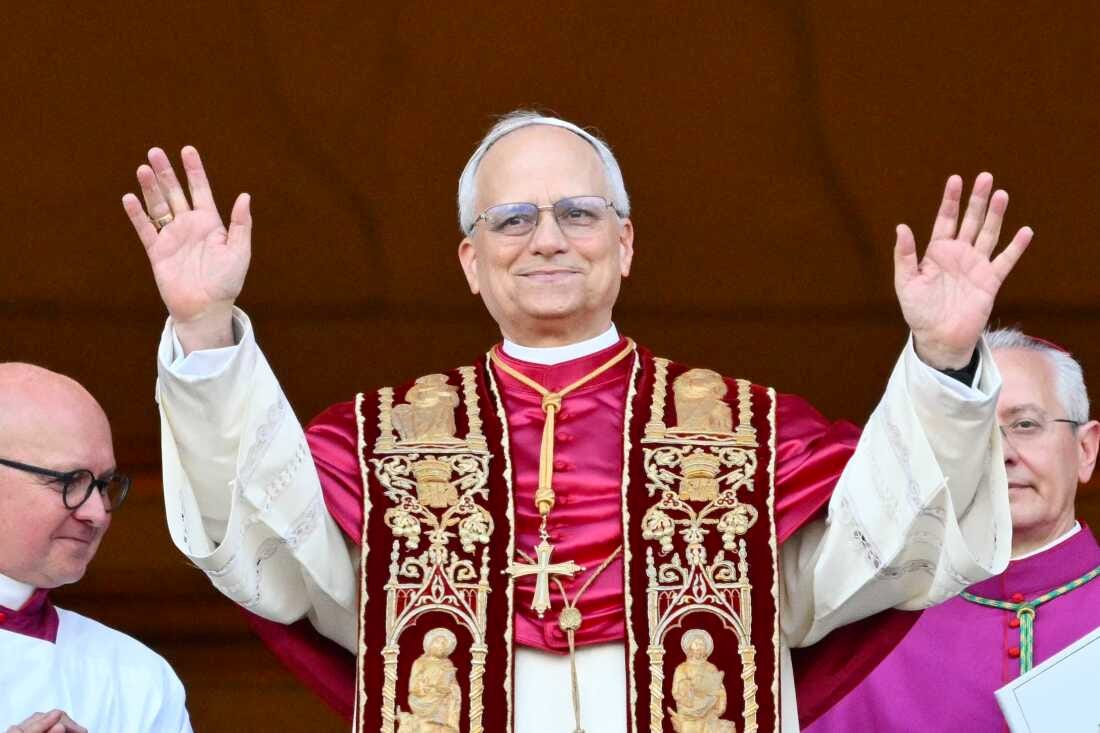Why Picking a Pope Takes More Than a Majority
Supermajority rules reflect the tradeoff between internal costs of reaching agreement and the external costs of making the wrong decision.
You’re reading Monday Morning Economist, a free weekly newsletter that explores the economics behind pop culture and current events. Each issue reaches thousands of readers who want to understand the world a little differently. If you enjoy this post, you can support the newsletter by sharing it or by becoming a paid subscriber to help it grow:

The Catholic Church just made history: a cardinal from the United States has been elected pope for the first time ever. Pope Leo XIV is relatively young by papal standards, and his selection was fairly quick. Much of the initial attention has been focused on what this means for American Catholics, church leadership, and global politics.
But what caught my attention wasn’t who was chosen, but rather how.
I’m not Catholic, but I do love a good contest. And I’ve always been interested in the ways institutions pick their winners, whether it’s the Electoral College, the Heisman Trophy, or the College Football Playoff. The papal conclave is another great example.
Unlike a lot of other decisions, the College of Cardinals doesn’t rely on a simple majority. To become pope, a candidate must receive at least two-thirds of the votes. That might sound like an obscure procedural quirk, but it’s actually an important economic decision. It’s a method that takes into account the costs of getting it wrong.

Why Voting Rules Matter
If you’ve ever sat through a group project gone off the rails, you already understand one of the main insights from The Calculus of Consent—a 1962 book by economists James Buchanan and Gordon Tullock that laid the groundwork for what we now call public choice theory. The big question they tackled: How should groups make decisions when not everyone agrees?
The answer depends on a trade-off between two types of costs: internal costs and external costs.
Internal costs are everything it takes for a group to reach a decision. It includes deliberation, bargaining, and the time spent hashing out differences of opinion. The bigger or more diverse the group, the costlier it is to get everyone to agree.
External costs come after the decision has been made, when a policy is passed or a leader is chosen that a sizable portion of the group didn’t want. The more people who feel like their voice wasn’t heard, the higher those external costs.
Choosing a voting rule—majority, supermajority, unanimity—is really about managing the tradeoffs of those two costs. If you make it too easy to select an option, you risk backlash from the group. But if you make it difficult, you may never reach a solution.

Unanimity vs. One Person Decides
The trade-offs are easiest to understand at the far ends of the voting spectrum.
Let’s start with unanimity, which means everyone has to agree. That might sound like a fair standard, but it can quickly become a logistical nightmare. Imagine trying to pick a lunch spot with a large group of your friends and needing everyone to be on the same page. The internal cost would be high because it would likely take a lot of time, energy, and bargaining to get everyone to agree. The upside? Once you get there, no one feels blindsided. The external costs are basically zero because no one got dragged along unwillingly.
Now flip to the other extreme: one person gets to decide, and everyone else has to live with it. Quick? Absolutely. It’s cheap in terms of internal cost, but that one person could pick something almost everyone hates. Thus, the external costs would be really high since most of the group had no voice in the outcome.
Neither system is ideal for most situations. One version makes decisions painfully slow. The other option risks a wildly unpopular decision.

Majority Rule
A more common voting method sits right in the middle of the two extremes. Majority rule requires just over half the group to agree. It’s the go-to for most decisions: passing legislation, electing board members, or choosing a prom theme. It’s efficient, familiar, and doesn’t demand we all agree on the selection.
Compared to unanimity, it has lower internal costs since you don’t need to get everyone to agree. That efficiency can come at a cost, however. A 51–49 vote means that nearly half the group walks away unhappy with the selection. For big decisions, like going to war or electing a leader, that kind of division can carry serious consequences.
Supermajority Rule Lowers the Risk of Bad Decisions
Majority rule works well when the stakes are manageable. But for decisions with high external costs, the margin for error is just too small. That’s why some decisions require a supermajority, like the two-thirds threshold used in the papal conclave.
Picking a pope isn’t just a ceremonial vote. It’s a decision that will affect more than a billion Catholics worldwide. The pope’s leadership shapes theology and the Church’s role in public life for years to come. That kind of decision comes with high external costs.
Pick the wrong person, and you don’t just risk a few disappointed cardinals; you risk years of internal division. That’s especially true today, when factions within the College of Cardinals span a wide ideological range from traditionalists to progressives.
A supermajority rule forces a broader consensus than just a simple majority. It doesn’t guarantee that everyone’s happy with the outcome, but it helps ensure that no single faction can push through a leader the rest of the Church won’t follow. Of course, it also makes the process harder.
Reaching two-thirds agreement in a divided group can be slower than a simple majority. That’s part of the reason why papal elections often take multiple rounds of voting. But that’s the trade-off: you accept higher internal costs to lower the risk of a disastrous outcome. It’s not efficient in the short run, but it’s worth the extra effort for a job that lasts a lifetime.
Final Thoughts
The Catholic Church isn’t the only institution that makes big decisions slowly on purpose. In the United States, overriding a presidential veto takes a two-thirds vote in both chambers. Amending the Constitution? Two-thirds of Congress plus three-fourths of the states. Impeaching and removing a president? Again, two-thirds of the Senate.
When the external costs of getting something wrong are significant, we don’t just ask for a thumbs-up from the majority. We ask for more. But we also have to deal with the higher internal costs.
So the next time it takes a few ballots to pick a pope, or the Senate fails to pass something big, remember that sometimes slow and frustrating is exactly the point.
Thank you for reading Monday Morning Economist! This free weekly newsletter explores the economics behind pop culture and current events. This newsletter lands in the inbox of thousands of subscribers every week! You can support this newsletter by sharing this free post or becoming a paid supporter:
Catholics comprise about 50% of Christians worldwide and 16% of the total global population [Pew Research Center]
135 of the Church’s 252 cardinals were eligible to vote for the next pontiff in 2025 [PBS]
There are only two other instances in recent history where a pontiff was elected after only two days of voting, first for Pope Benedict XVI in 2005 and the second for Pope Francis in 2013 [ABC News]
From 1600 to 1900, the average conclave lasted about two months [NBC News]






> So the next time [...] the Senate fails to pass something big, remember that sometimes slow and frustrating is exactly the point
Indeed. Feature, not bug. As I often must remind people lamenting congressional gridlock.
Jadrian, did you use the terms "internal costs" and "external costs" purposefully? Is that where externalities come from?
As in, "one person gets to decide, and everyone else has to live with it." One company finds it easiest/cheapest to dump chemicals into the river, but everyone downstream has to live with it (pay the price for it).